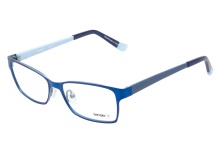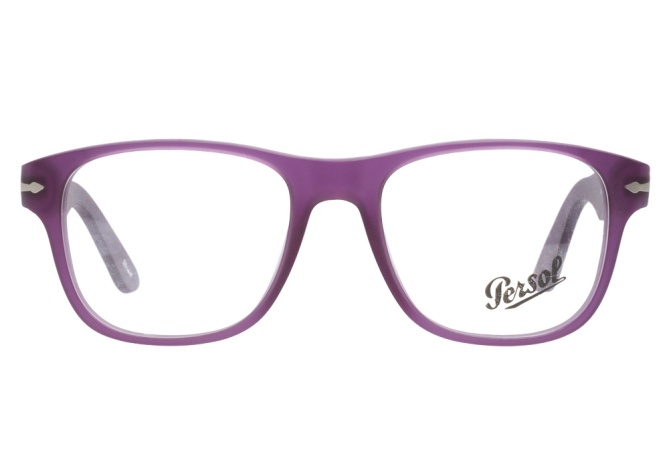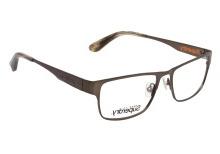Glasses
With today's wide range of styles, shapes, lenses and functionality, choosing the right pair of glasses can seem like a daunting task! With the right knowledge and a little time and effort, however, you can find a pair of glasses that doesn't just fit your face, but that also fits your style and personality!
Follow these simple steps to find the perfect pair of glasses for you!
Step One - Get a complete eye exam
It’s vital that you have a current prescription (no older than 1-2 years), but it is also important to ensure that there aren’t any underlying eye health issues that may affect more than just your prescription. So be sure to receive a complete eye examination to keep your eye health up to date, versus a sight test which only checks your prescription, and you’ll be well on your way!
Step Two - Think about your lifestyle
Your optometrist can help you determine how large of a role your glasses will play in your everyday life. Think through your average week and how wearing glasses could influence your day-to-day activities.
For example:
- Do you play sports?
- Do you sit in front of a computer all day?
- Do you only need glasses for reading, or will you be wearing them from sunup to sundown?
- Do you have the habit of leaving your frames out of their case where they can get bent?
These factors will influence what type of frames and lenses that will best suit you and your lifestyle.
Step Two - Think about your lifestyle
Your optometrist can help you determine how large of a role your glasses will play in your everyday life. Think through your average week and how wearing glasses could influence your day-to-day activities.
For example:
Do you play sports?
Do you sit in front of a computer all day?
Do you only need glasses for reading, or will you be wearing them from sunup to sundown?
Do you have the habit of leaving your frames out of their case where they can get bent?
These factors will influence what type of frames and lenses that will best suit you and your lifestyle.
Step Three - Find your frames
This step can be a lot of fun! There are a limitless variety of
frames available in almost every shape and colour imaginable. It can be
helpful to bring a friend along who is familiar with your personal
style and can give an honest opinion.
Remember that the most
important factor in picking a frame is comfort for you, the wearer.
Everyone's face is different, and an optician can help you find a frame
that will comfortably fit the shape of your face.
The first thing
you should do is ask your optician if there are any styles that will
not work with your given prescription. Some extreme prescriptions may
not fit or look flattering in certain frames.
Once you've ruled
out any frames that won't fit your prescription, try on as many
different styles as you can. When you find a general style that you
like, look for other frames within that style range until you've
narrowed it down to the perfect frame for you!
  
|
|
Step Four - Lenses
The type of lenses you require will be largely dependent on your prescription and your lifestyle. Another factor that will determine the type of lens you require, is whether you need single vision or multifocal lenses. Your optometrist and optician can help recommend the right type of lens for you based on your needs.
Some of the options available are:
- Lens type - single vision, bi-focal, tri-focal, progressive.
- Material type - glass, plastic, polycarbonate (these materials differ in weight, thickness, and scratch resistance)
- Tinting - clear, single tint, transition tint, etc. (do you have a sensitivity to light or would you want something that will act as both indoor glasses and sunglasses?)
- Coating - Anti-fog, anti-glare, anti-scratch, etc. (ex: anti-glare is great for people who sit in front of computers all day)
The above list is in no way exhaustive. Talk to your optometrist about what options will best fit your needs and lifestyle!
Step Five - Fitting
Your optician will measure your pupillary distance (PD) to make sure the lenses are placed correctly in the frames, as well as make sure the glasses sit well on your nose bridge and fit properly around your ears.
Step Six - Taking care of your new glasses
Once your glasses have been made, ask the optician to show you how to properly care for them.
Some general rules are:
- When they're not on your face, put them in their case... a hard case is best for storing your glasses when not in use.
- Always remove your glasses with both hands and pull them off straight, not off to one side as that can bend the frame.
- Never clean your glasses when they are dry. Spray them with lens cleaner and use a clean, lint-free optical cloth.
- Bring your lenses back to the store periodically to make sure they still fit properly. Your optician can make small adjustments to ensure they remain comfortable. Don't try to make these adjustments yourself as you can damage the frame.
Now go out and find your perfect pair of glasses!